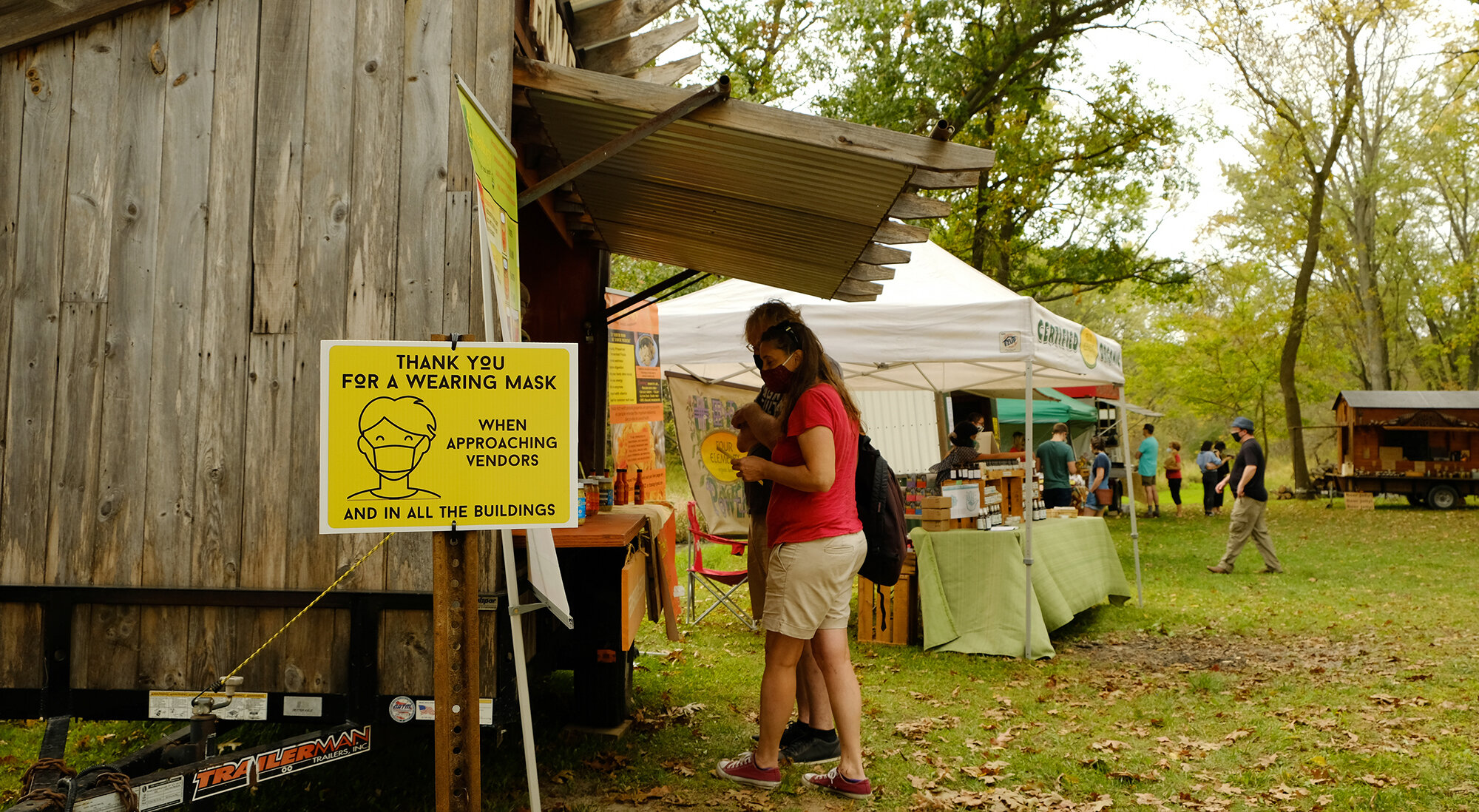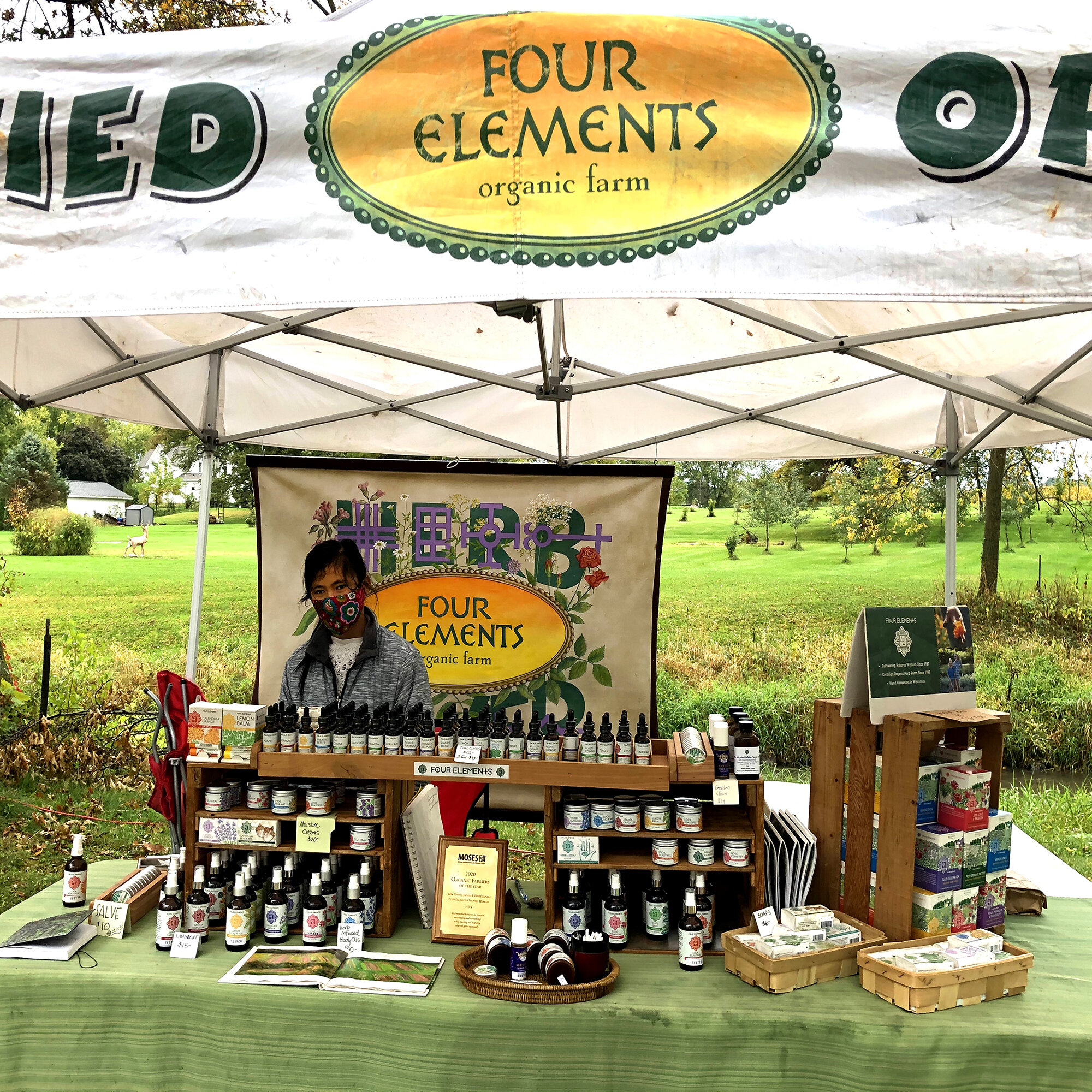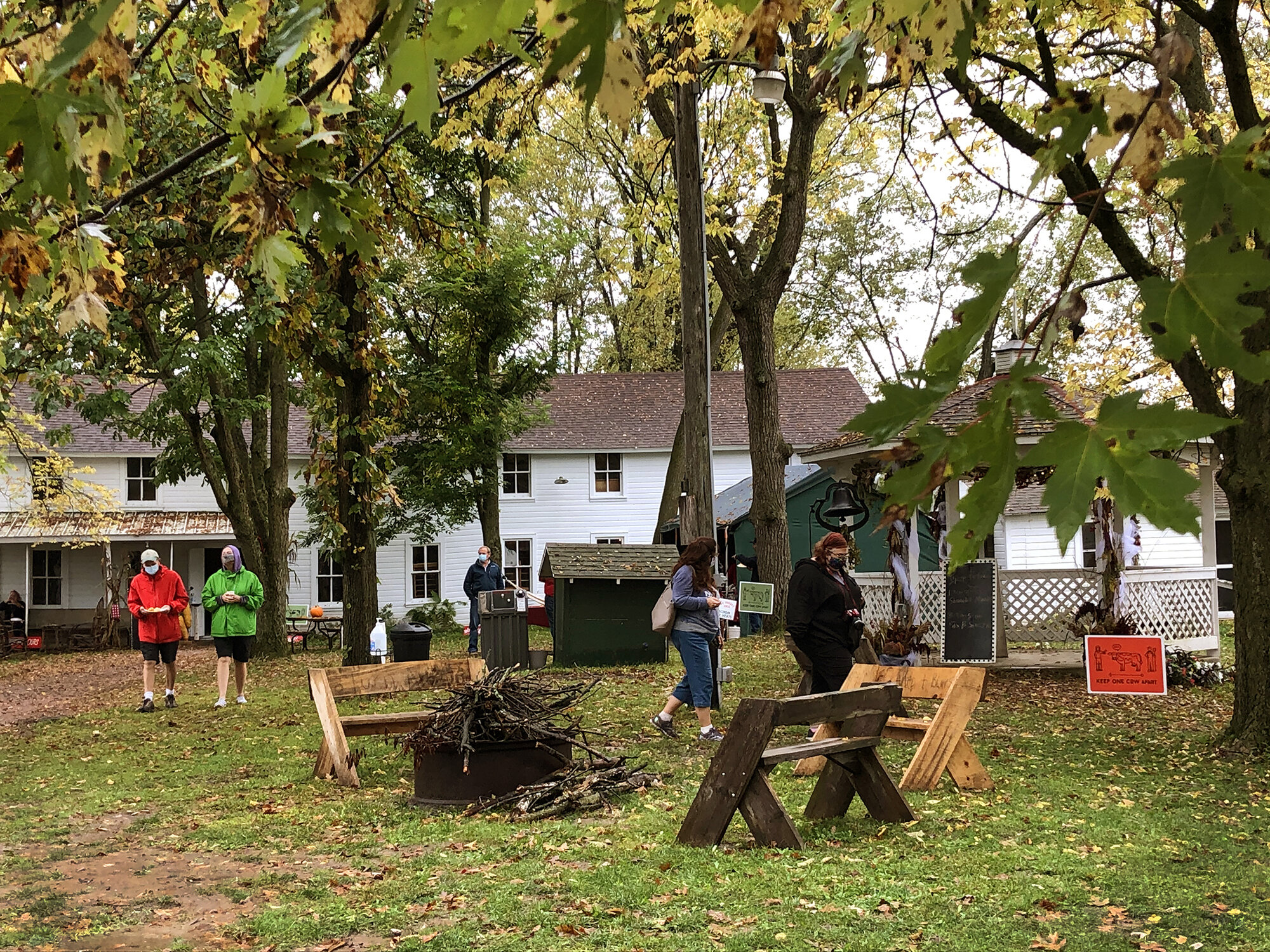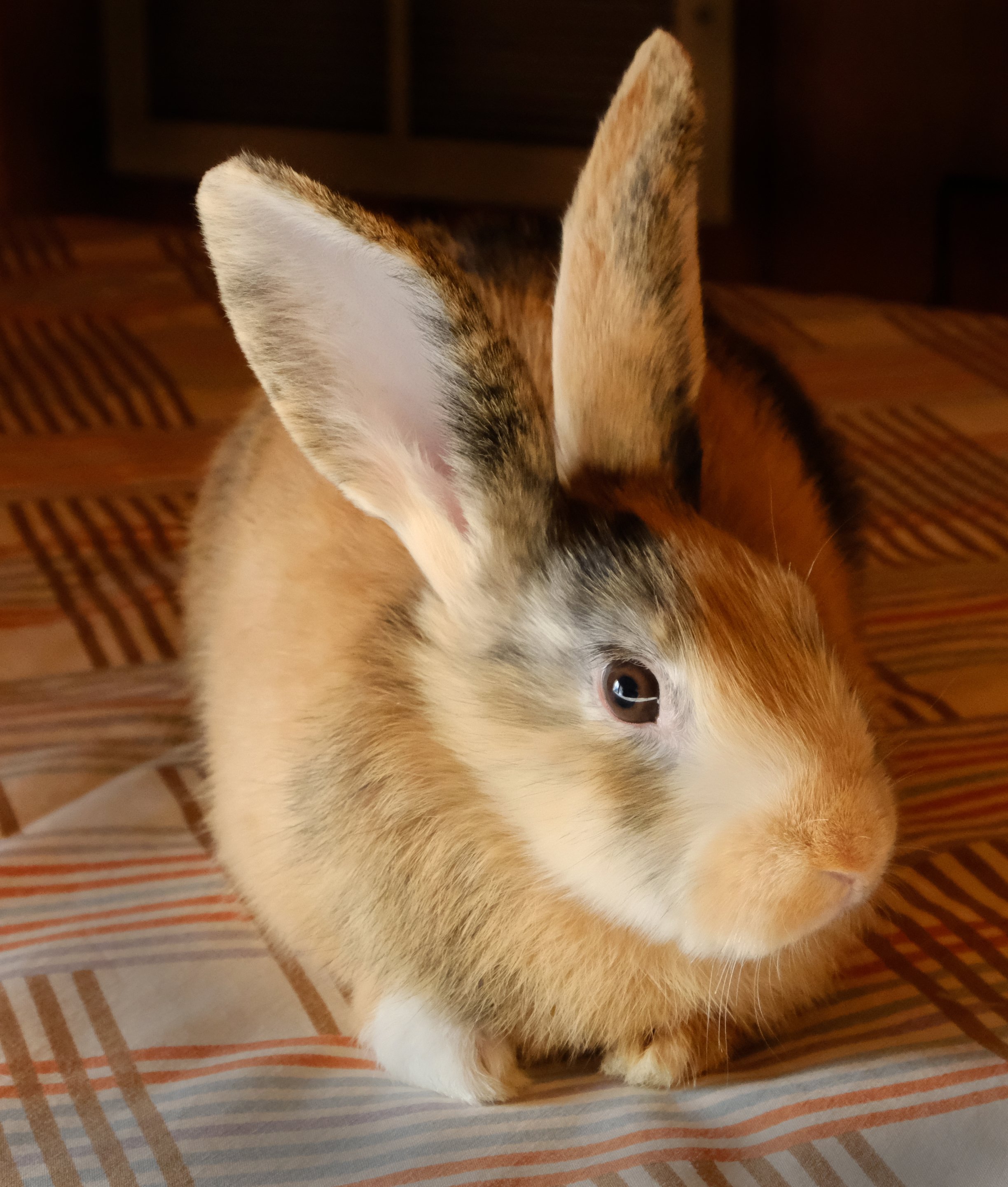Leaving the 21st Century Plague Behind for a Few Moments - Farm /Art Dtour 2020
Many sensations pass through our bodies. Why do some live within us forever, ready to be called up and calm us during stressful times? Like many, I have been periodically confined to my house during the coronavirus pandemic. But the last weekend in September, my husband Dan Donovan and I made a long-anticipated trip to Southern Wisconsin and the Baraboo Hills for Fermentation Fest and the Farm /Art Dtour produced by the Wormfarm Institute. The trip is living in my body, sustaining me now.
First, a parable… Years ago, during impoverished post-art-graduate-school days, vacation was backpacking in the Wind River Mountains of Wyoming. A friend and I drove the Interstate from Wisconsin through the blistering heat of the Plains states in a tiny cheap car with the windows rolled down. The roar of passing semi-trailers, deafening. The heat was stifling, but the noise was worse. When I got to Pinedale, the silence of the mountains was a relief, but the noise and vibrations lived in my body for days. My body had absorbed the sound and needed to purge it. I became aware of how sensations live in the body.
Madison, Wisconsin was home then, and on Sundays, I often drove out to photograph in the Baraboo Hills. This year, Fermentation Fest’s in-person classes were canceled but the Farm /Art Dtour was able to proceed because the installations occur outdoors, in farm fields. Visitors were counseled to “keep one cow apart.” The new route, in southern Sauk County, followed some roads where I knew every curve and vista.
The Field Notes sign about Ethics that features a quote by conservationist Aldo Leopold (one of my inspirations) was sited near the road leading to the Pine Hollow preserve where I made my first successful landscape photographs. There were other coincidences that connected past and present, and new experiences and sensations along the way.
The Farm /Art Dtour had trailheads in Plain (west) and Sauk City (east) and a mid-way point gathering place at the Witwen Park & Campground. Situated in a grove of shade trees next to Honey Creek, the grounds include several historic buildings that have been actively used for church meetings and events since 1893.
The Food Chain – A Market Place of Food, Art and Ideas featured artist-built Roadside Culture Stands that sold some of my favorites: K. Clark’s Moroccan spiced pickled asparagus; Solace Creek’s drip coffee; tinctures, teas and oils by Four Elements, a nearby organic herb farm; and savory landjaeger by Wisconsin River Meats.
Honey Creek was at eye-level through propped-open screen windows in the Tabernacle at Witwen Park & Campgrounds.
Live music drifted from the 1918 Tabernacle building as we strolled the grounds. In this pastoral setting, I felt like I’d stepped back into the 19th century for a few hours, leaving our 21st century plague behind.
I was on assignment to write a feature about the Dtour for Landscape Architecture magazine. Writing and photographing with a goal in mind means I keenly focus my thoughts and perceptions. I knew that I wanted to interview Tory Tepp who had created an earthwork about cover crops including Kernza®, a perennial grain. I met Tory at his installation, Sauk County ARK, constructed of old steel silo remnants, recycled barn wood and rusty mechanical parts, situated in a field of sprouting Kernza® and surrounded by a garden of other grassy cover crops.
Later, as the sun sank to the horizon, Sauk County ARK became the backdrop for a performance by Tory and his musical troupe, the Earthtones. Electrified and amplified farm tools including shovels, hay rakes and a scythe became the instruments for an improvised sound piece by Tory and Nic Stage. The implements produced a throbbing drone, like a heart beat emanating from the earth beneath our feet that harmonized with the high-pitched whine of crickets from the fields. Dancer Sarah Butler’s eerie movements created a creature animated by the electrified drone.
The most surprising, haunting and ephemeral Dtour work was The Power of Fragility by Hartmut Ringel, Wisconsin Dells, Wisconsin. I entered a small white-washed chapel and inside was a circle of egg-shells on the rough wood floor. The door and windows were thrown open and a strong wind blew through the building. With particularly violent puffs, the empty shells chattered and clattered against each other, speaking a mysterious language.
This work came about through serendipity. Artist Donna Neuwirth, co-founder of the Wormfarm Institute with her partner Jay Salinas, says that Hartmut had submitted his idea for an eggshell work for an earlier Dtour, but the jurists found it too fragile for outdoors. Then Donna, who combs the countryside for potential locations for installations and intensively networks with local farmers, discovered the abandoned chapel. It was empty but maintained by the Sprechers, a local family, and they were willing to open it to the public. Hartmut had applied for this year’s Dtour but with a different idea. Donna went back to him and said, “We have the perfect place for your eggshell work.” They visited the chapel space, inspiration took root, and it all came together. Hartmut has created videos of the work.
Quote from “Wild Geese,” Mary Oliver’s beloved poem. Hand-lettered sign by Joyce Ihde
Most of the weekend was spent in the car, driving between art installations and past signs with poetry that made the earth appear to speak directly to us. We hopped out to stomp through a rutted cow pasture next to Honey Creek to read local stories printed on cyanotype banners by Sheila Novak, Emilie Bouvier and Crysten Nesseth. Viewed the surrounding Baraboo Hills through a wood lathe sculpture by Peter Krsko sited on a triangular plot of land where three rural roads meet.
From under an umbrella during a downpour, I photographed Brian Sobaski’s hands gesturing in actions associated with planting and harvesting. A weaving with ribbon fringe dancing in the wind by Ojibwe artist aabaabikaawikwe was paired with quotes from Lauret Savoy and Willa Cather. The political season was lampooned in a work by Erika Nelson that invited visitors to vote on questions like WHERE ARE YOU? on a scale between fearful and hopeful. Anwar Floyd-Pruitt’s exuberant floral tribute sprouted around a hay wagon in an alfalfa field. Dan posed in farmer-stance in front of a monumental street-art style portrait by Brent Houzenga of Ervin Sprecher, the patriarch of a local farming family.
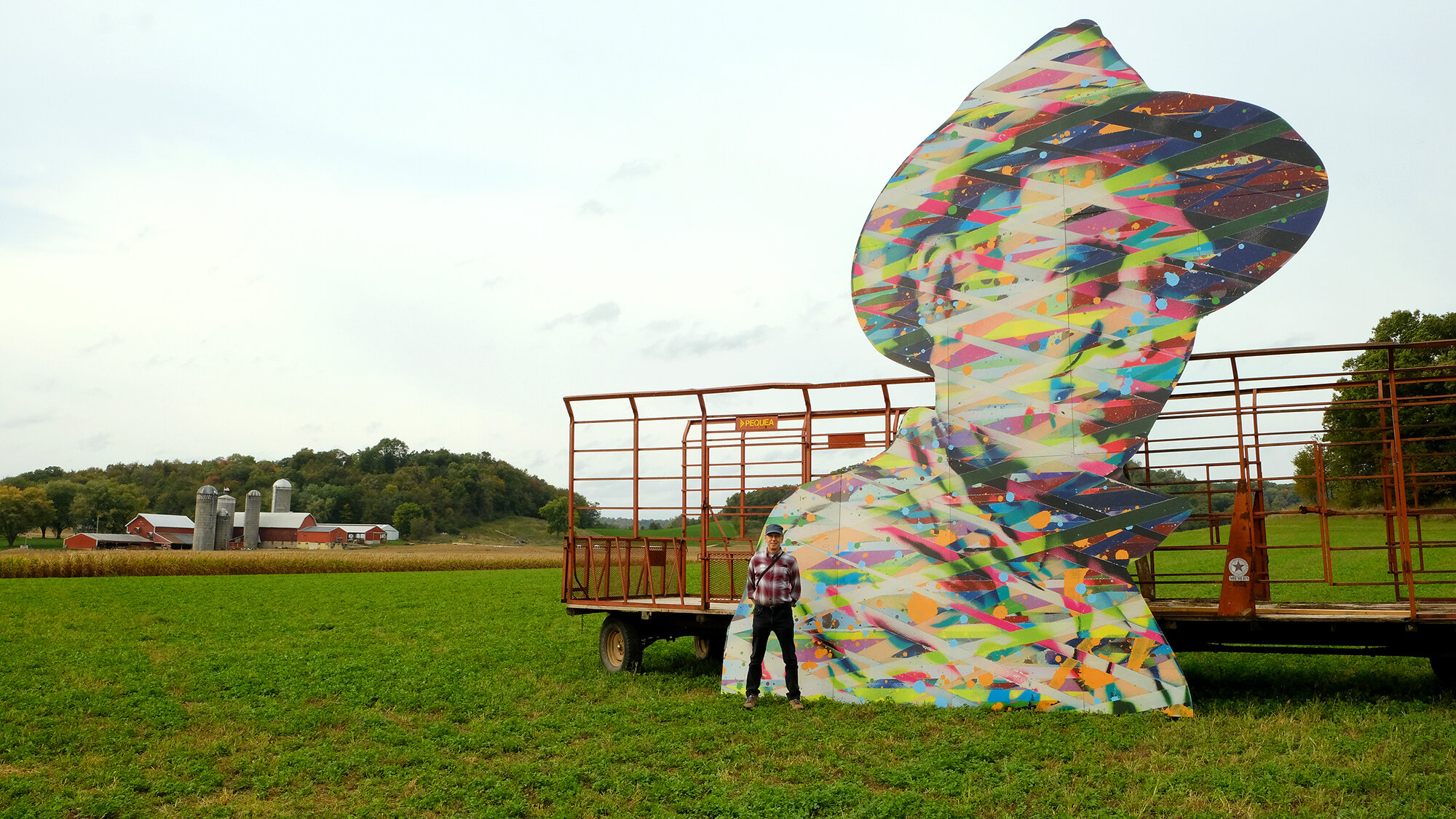
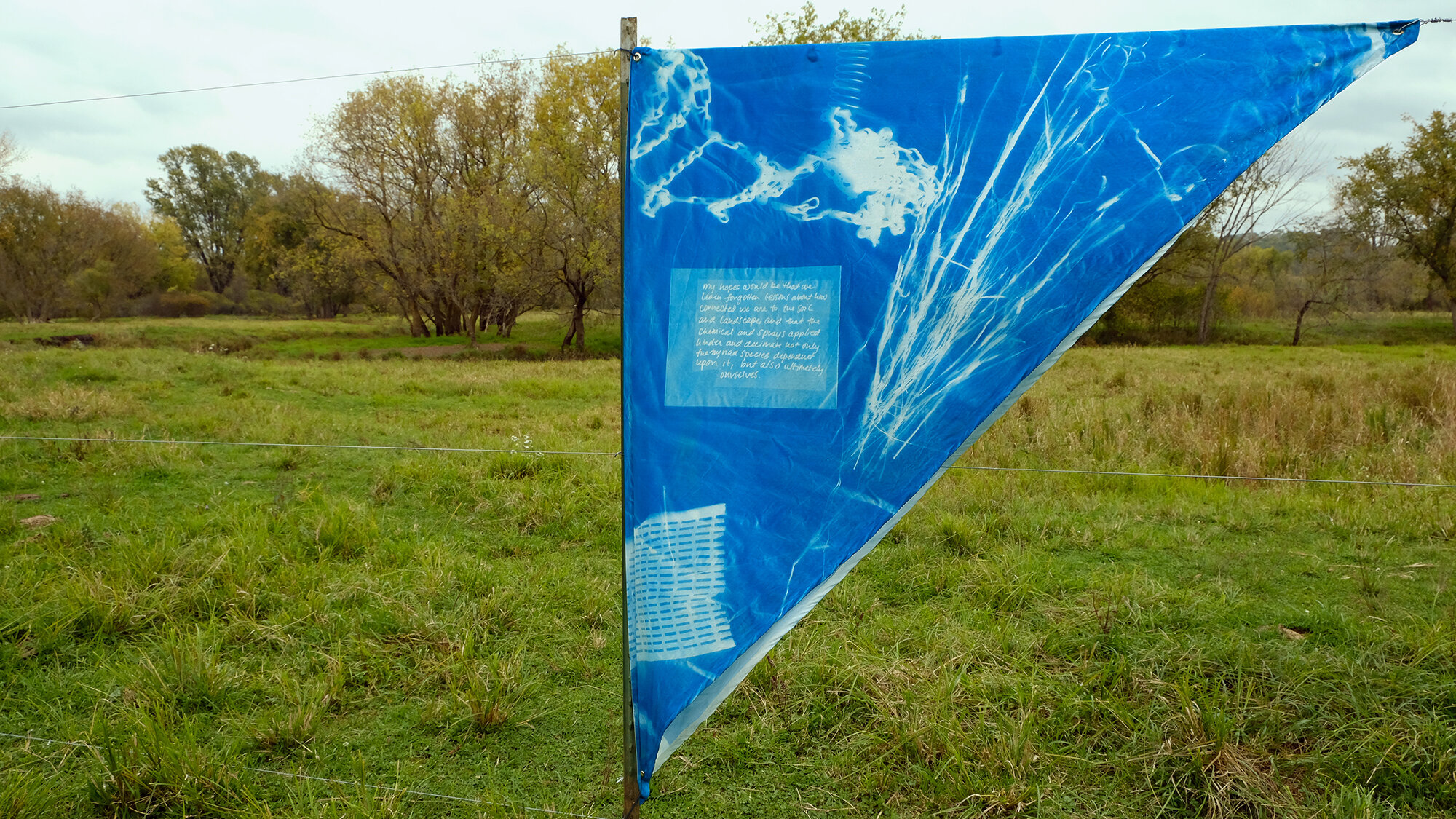
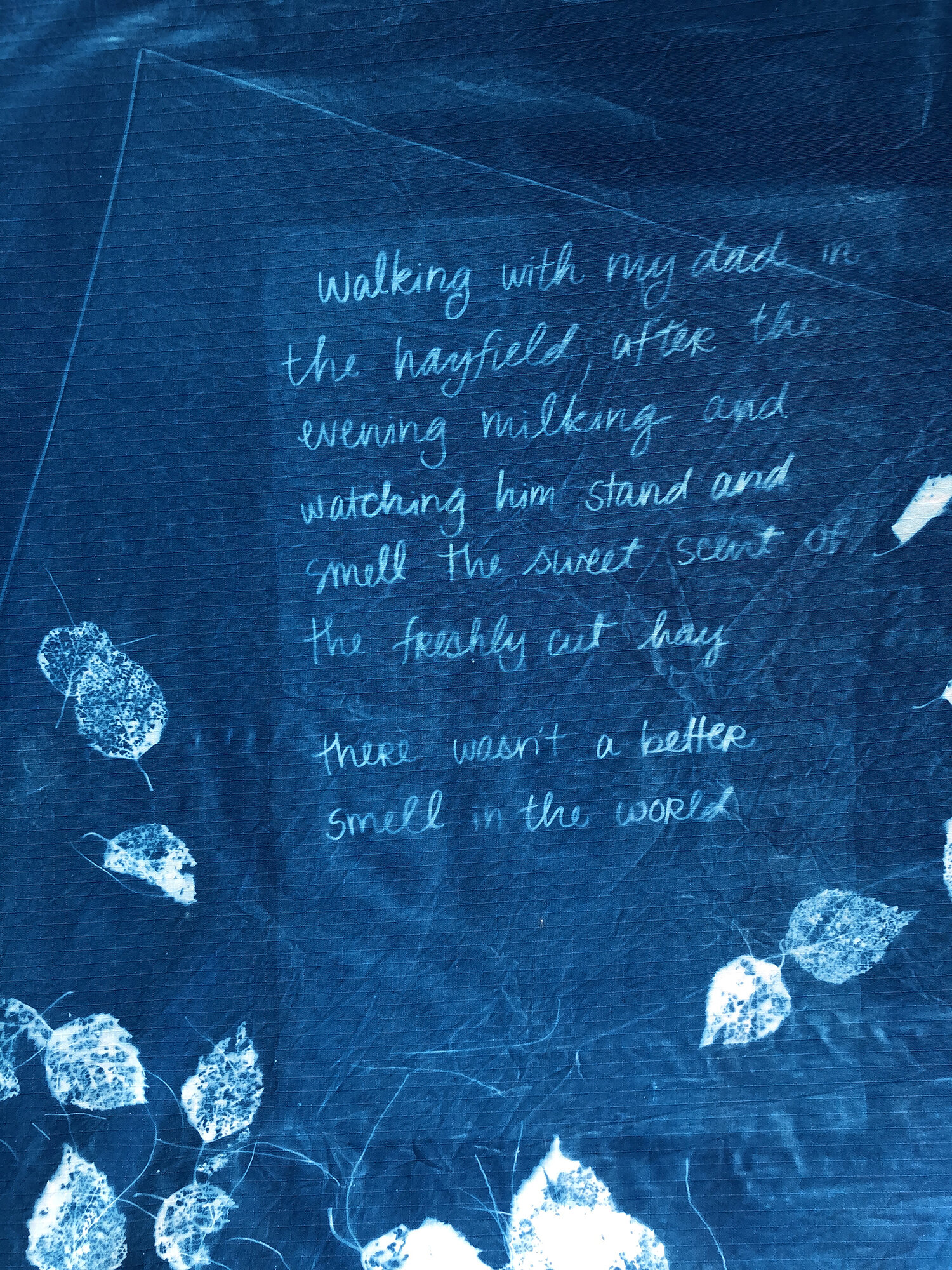
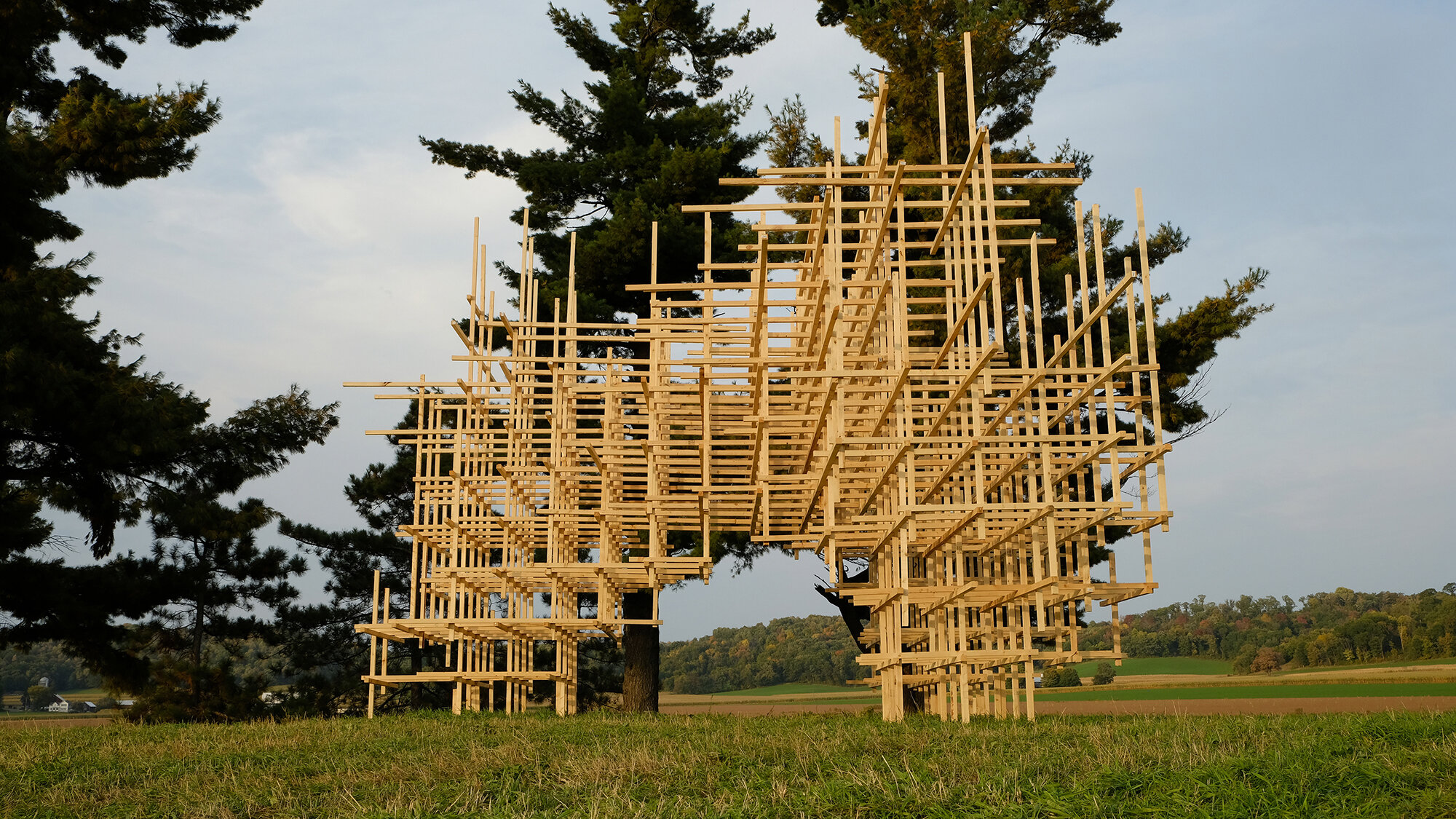
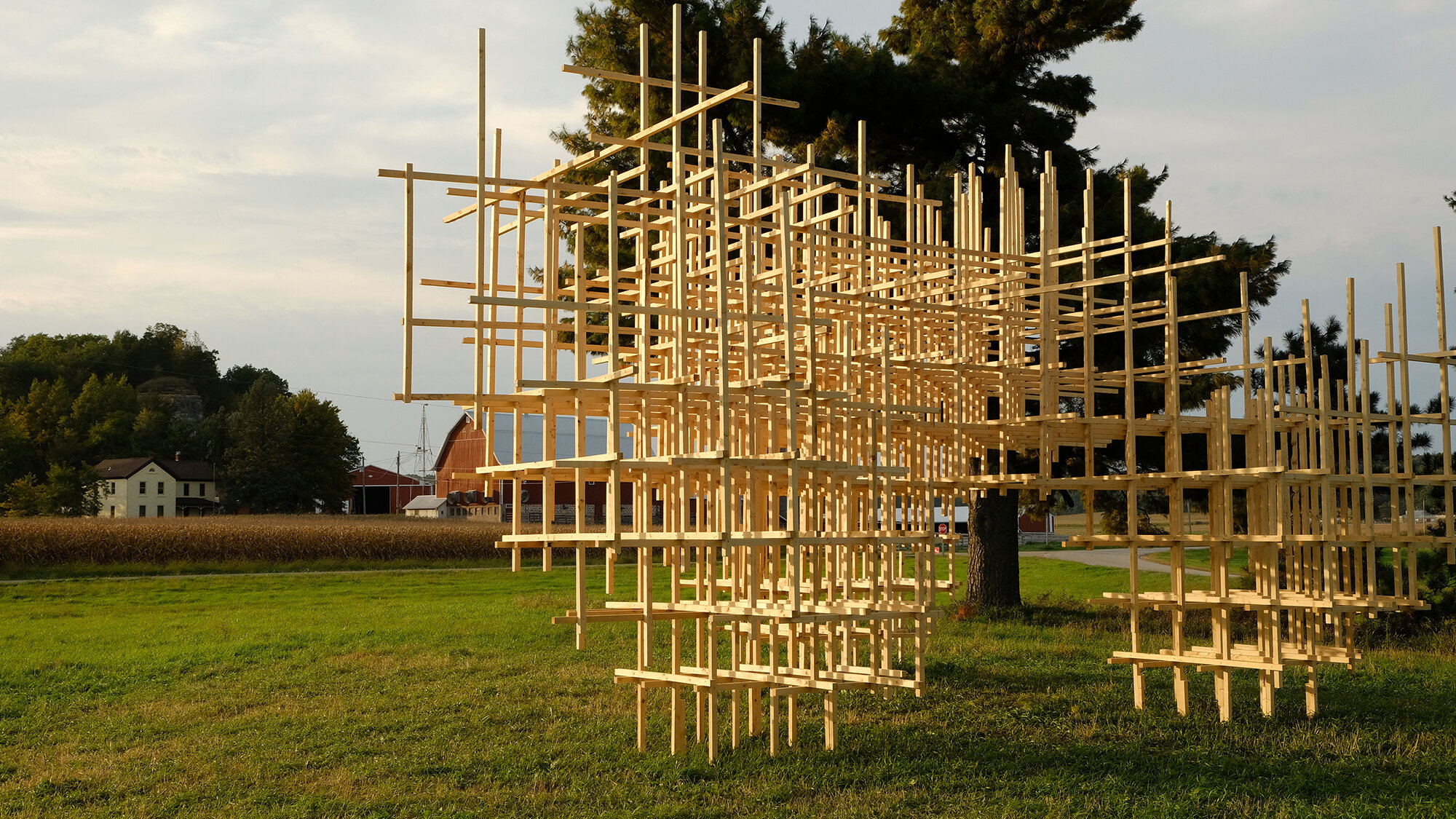
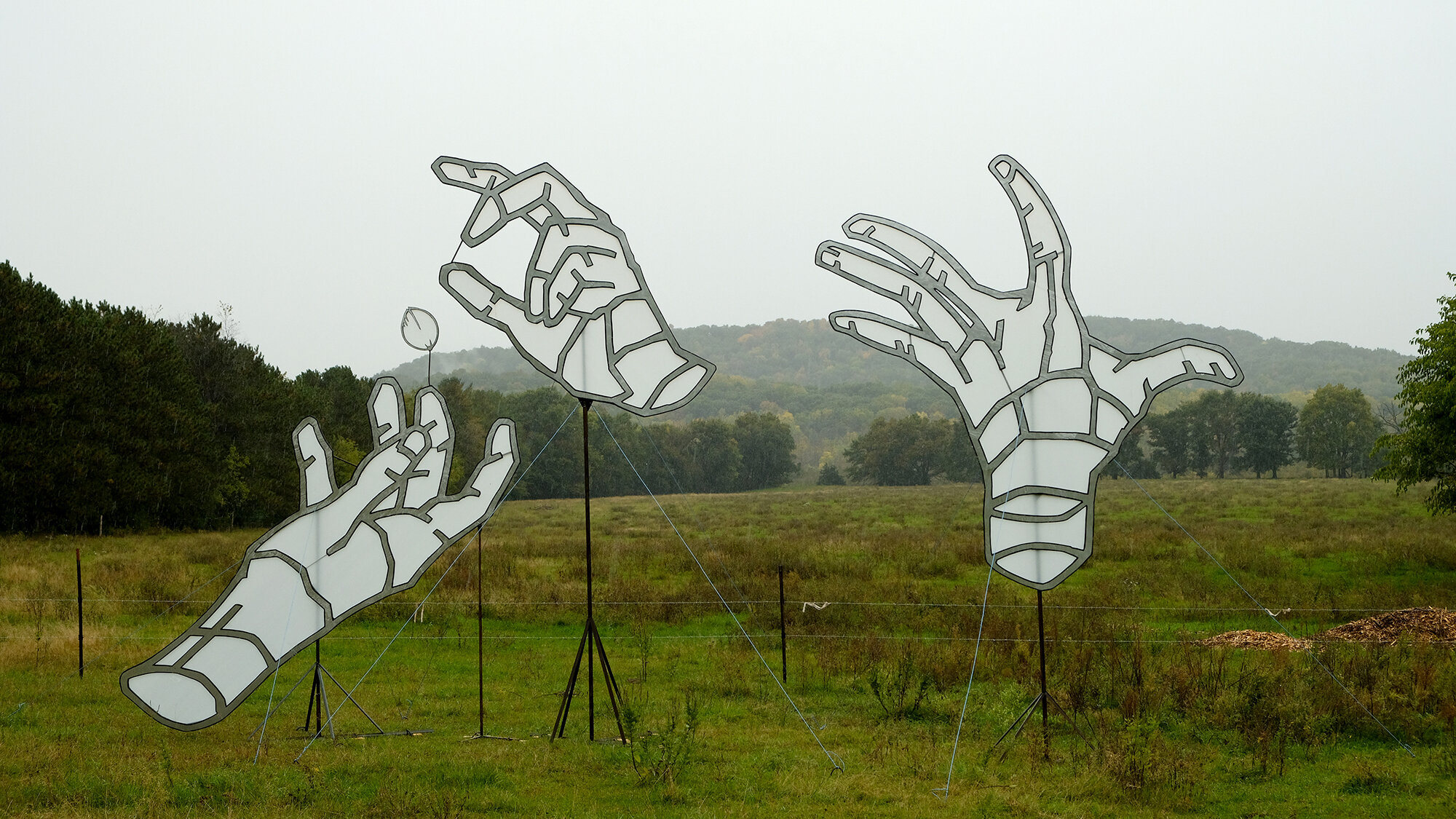
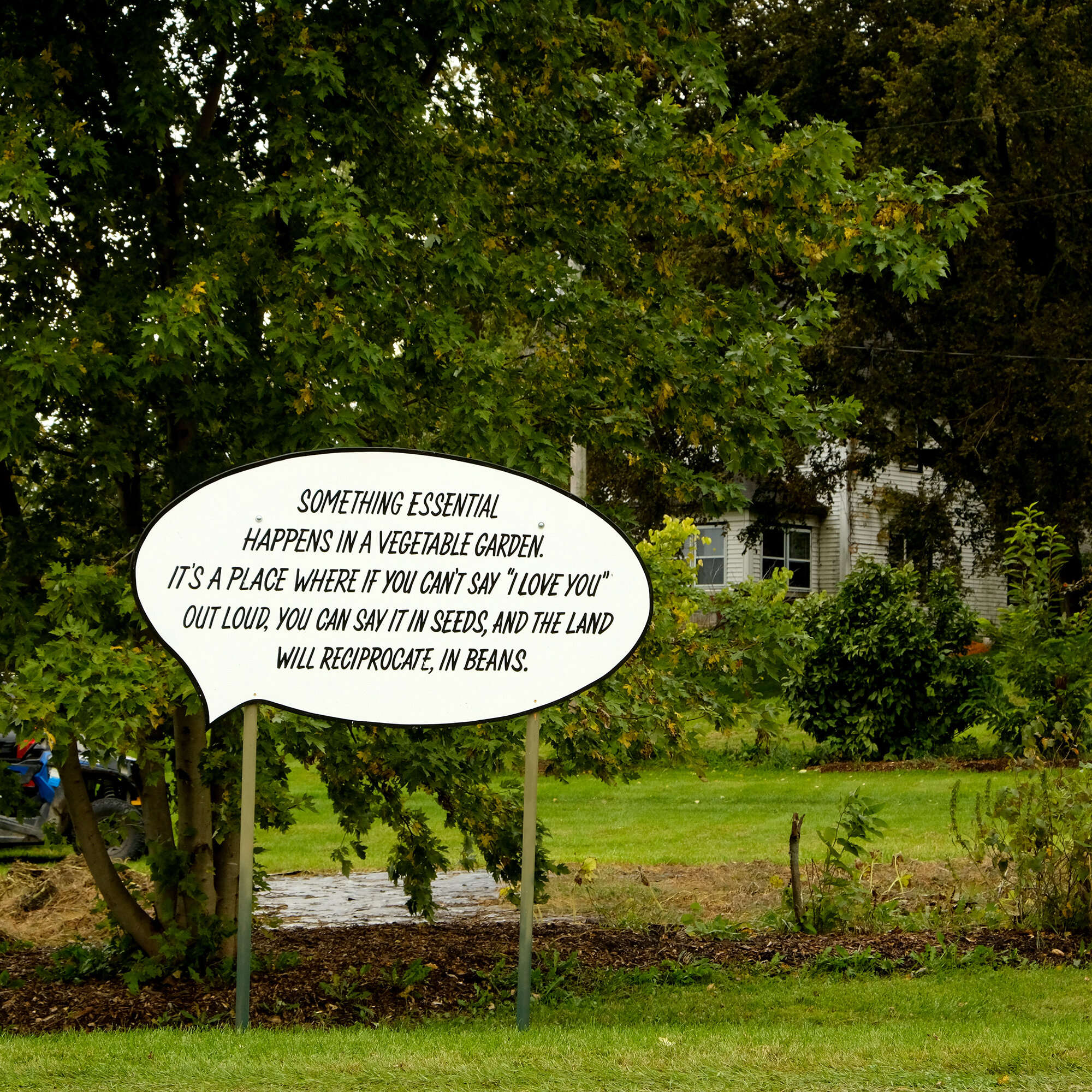
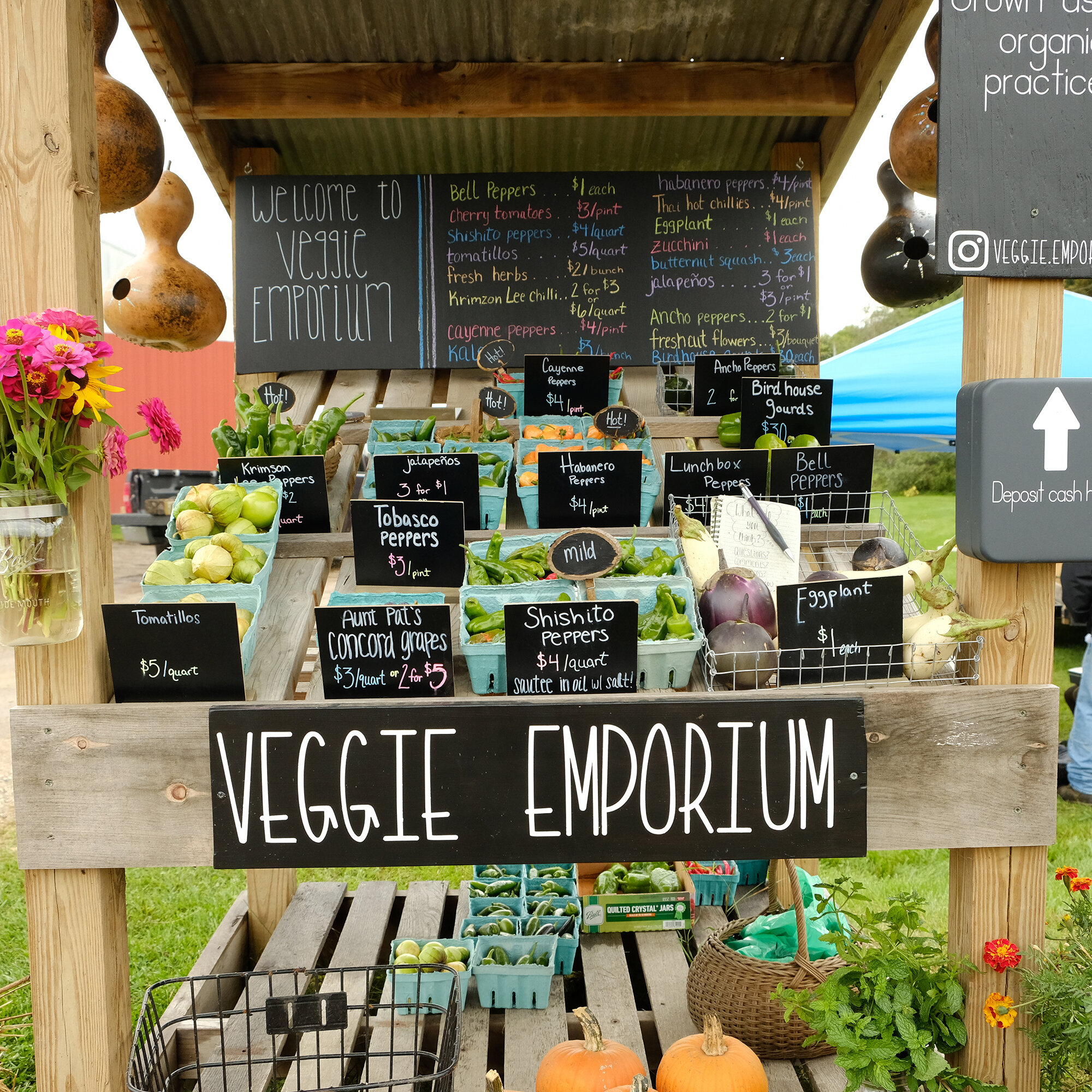
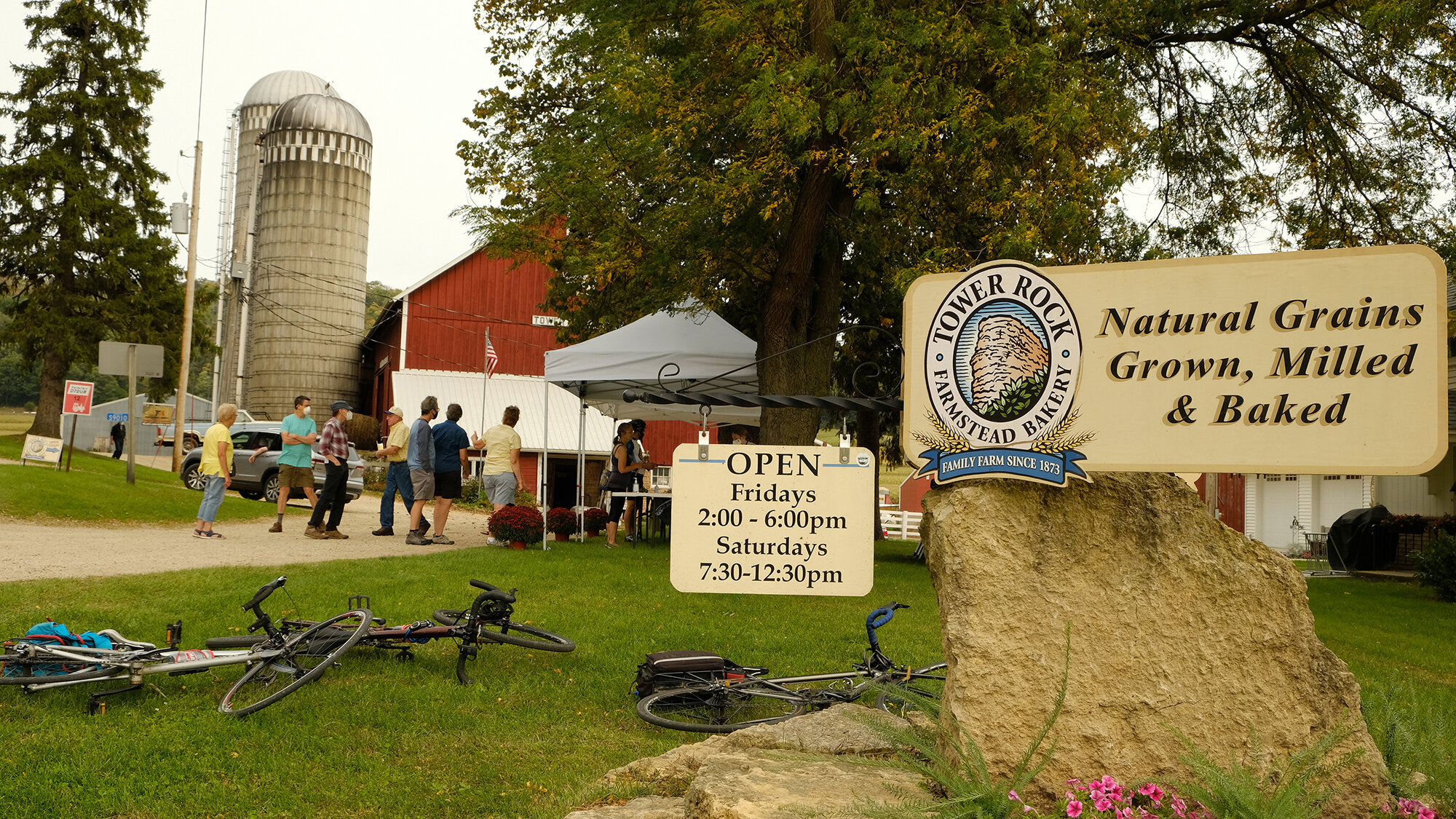
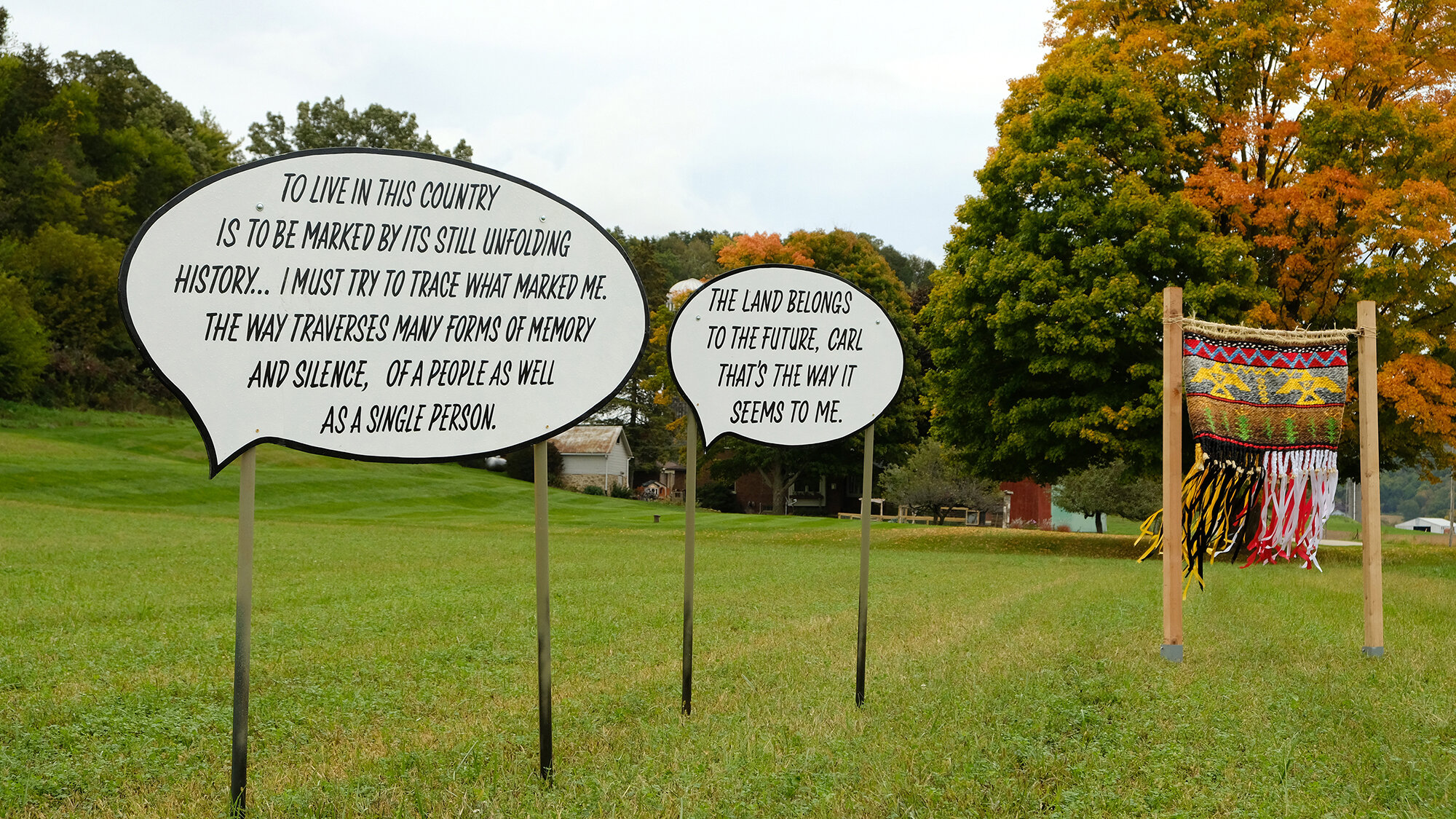
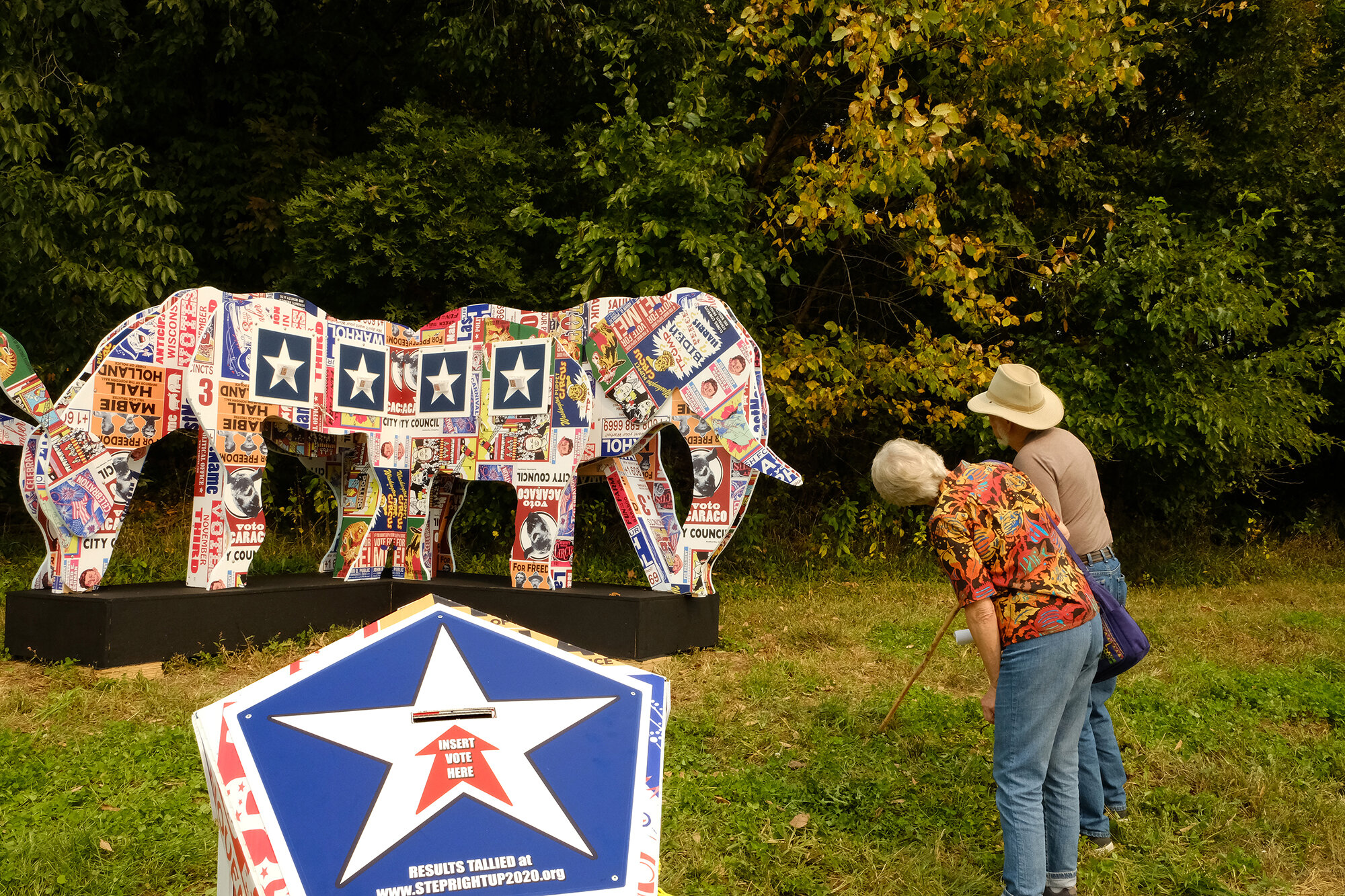

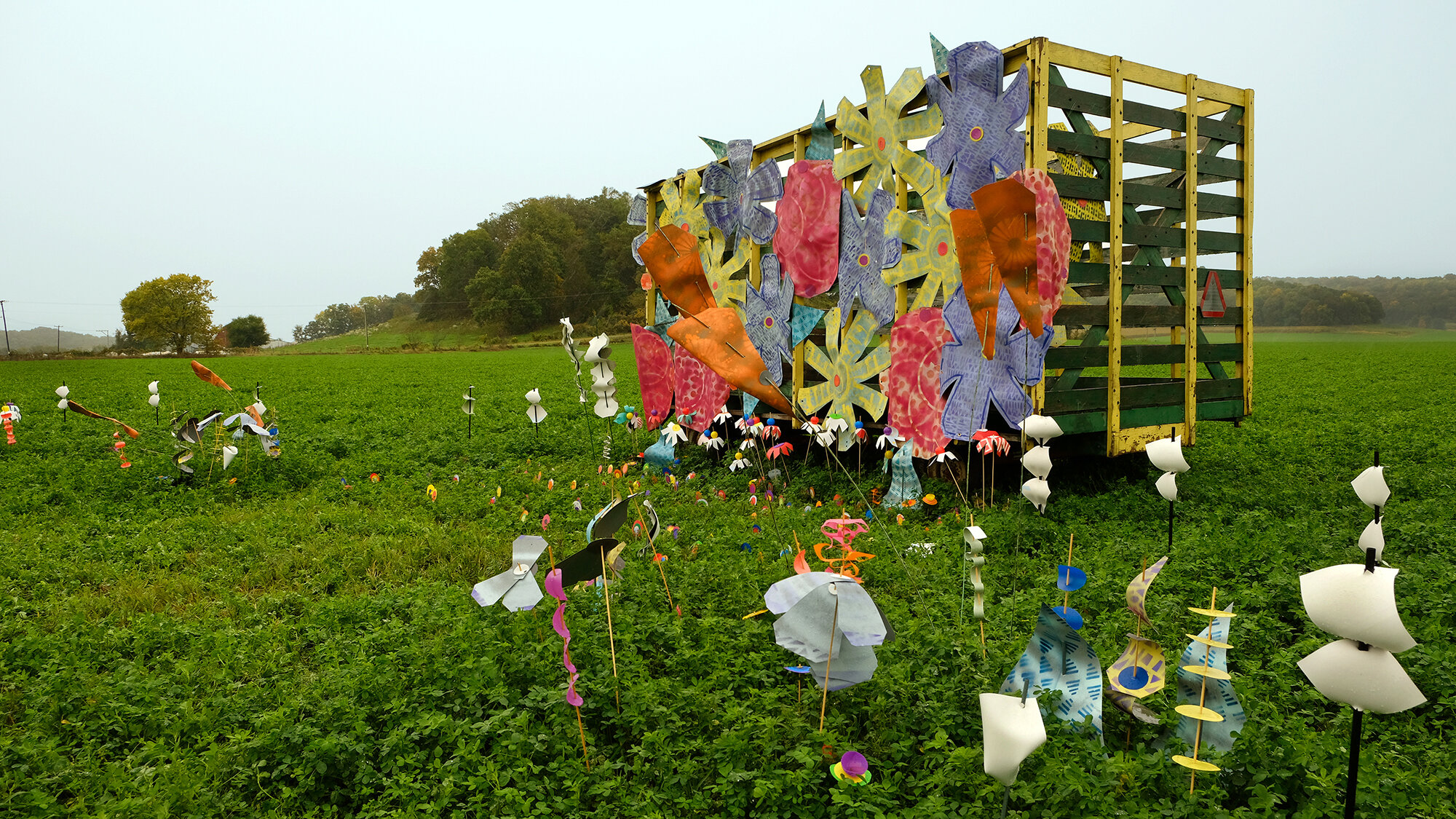
I needed more time outdoors, and to close out the weekend, suggested a hike at Hemlock Draw in the Baraboo Hills. I am introducing Dan to The Nature Conservancy preserves in the area. Hemlock Draw is a shady, cool hollow along Honey Creek, bounded by bluffs. The presence of both northern and southern plant and bird species makes it an important site. Narrow pillars of quartzite called "sea stacks" erupt in the forest, remnants from when the Baraboo Hills were a chain of islands in a vast sea.
We discovered a clearing within a grove of hemlock and yellow birch carpeted with intricate fungi. I could have spent hours examining the astonishing forms at our feet and clinging to decaying trees. Clearly, the summer had been very wet.
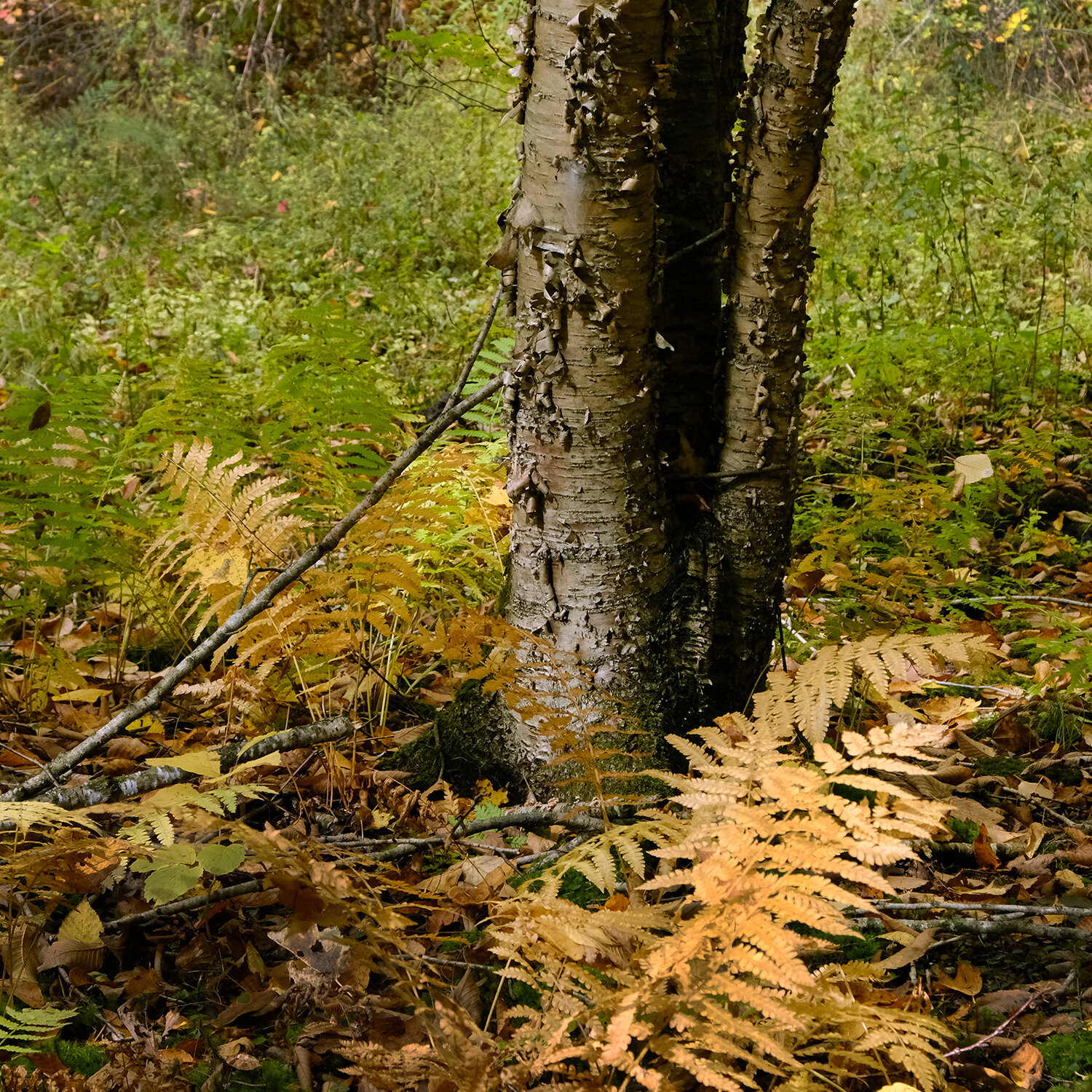
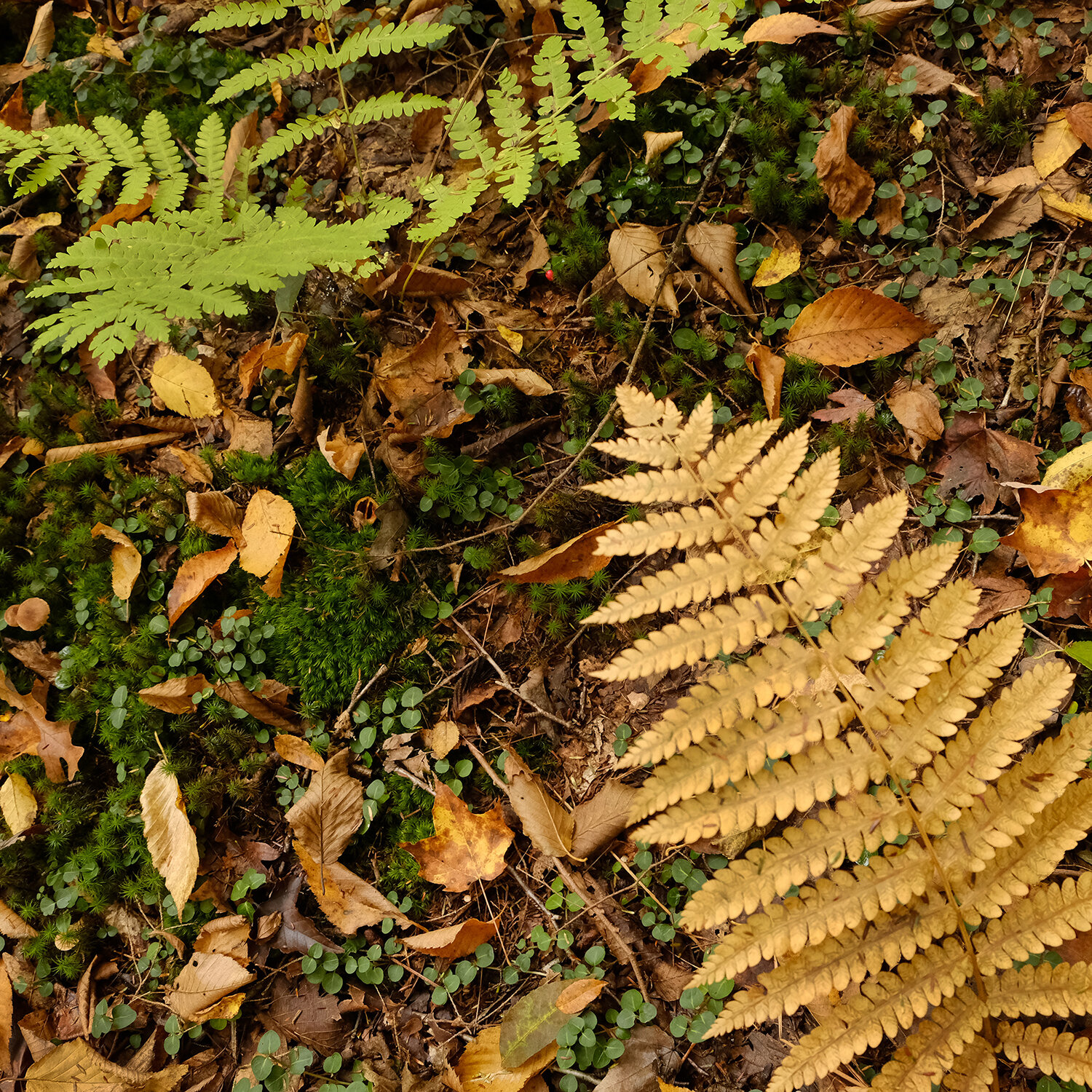
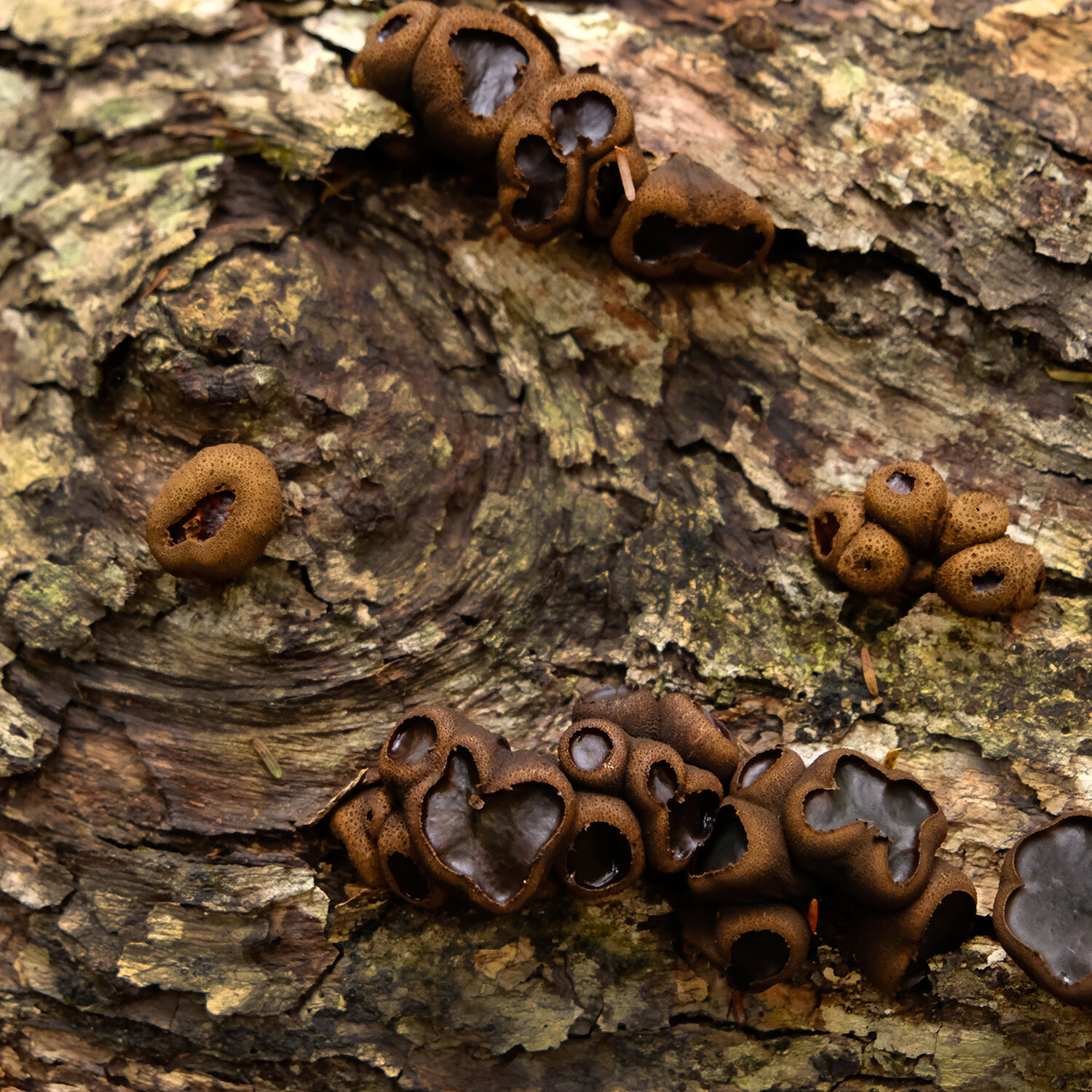
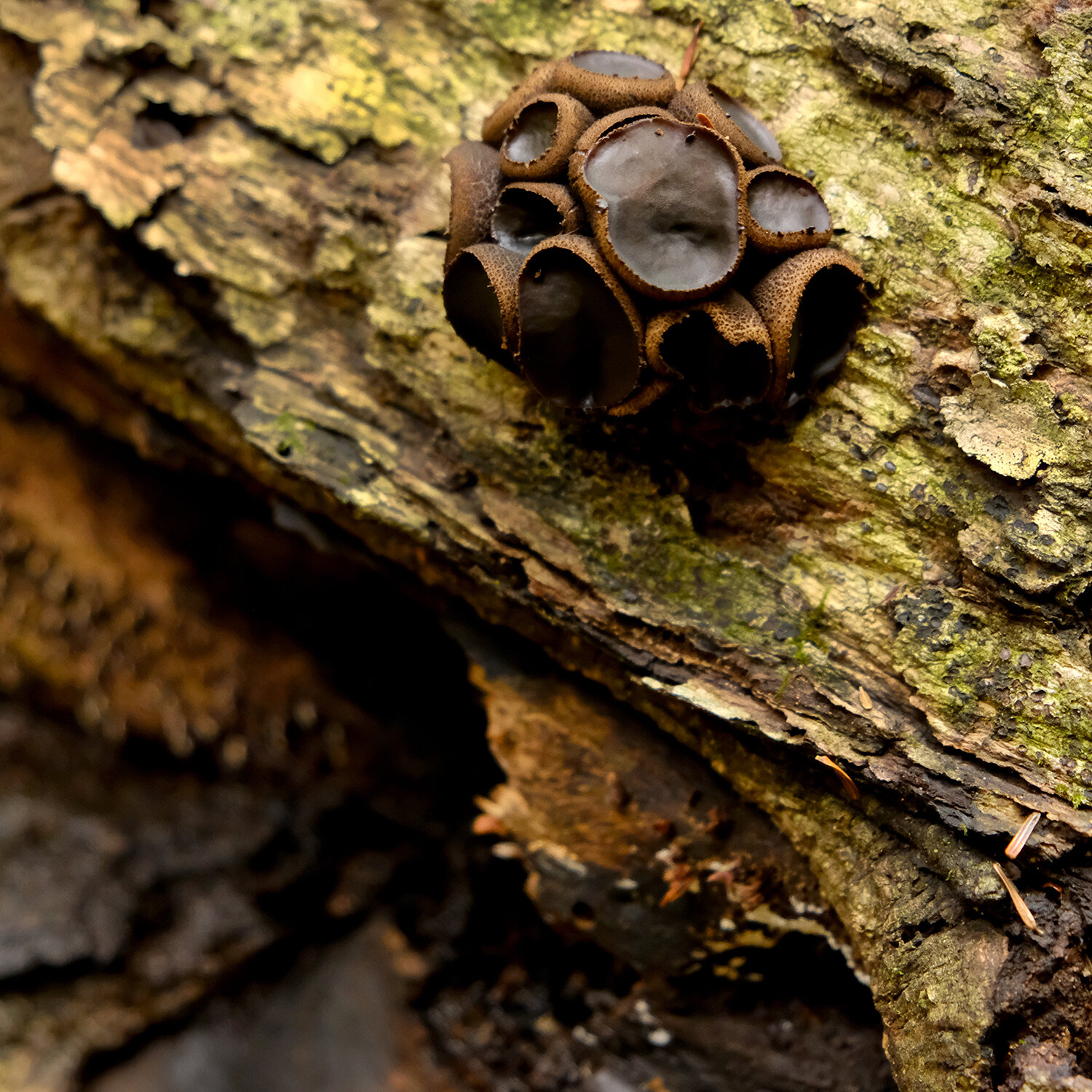
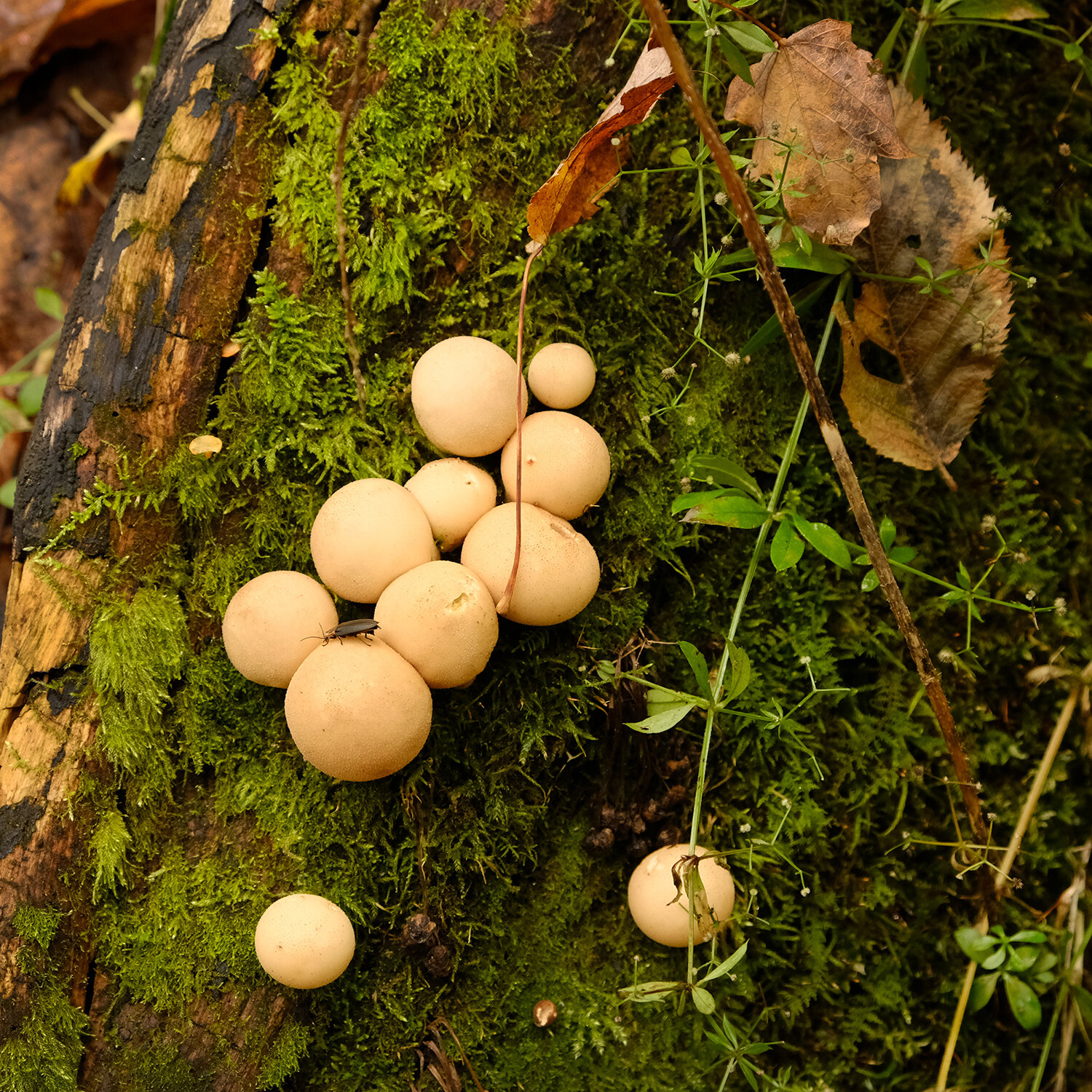


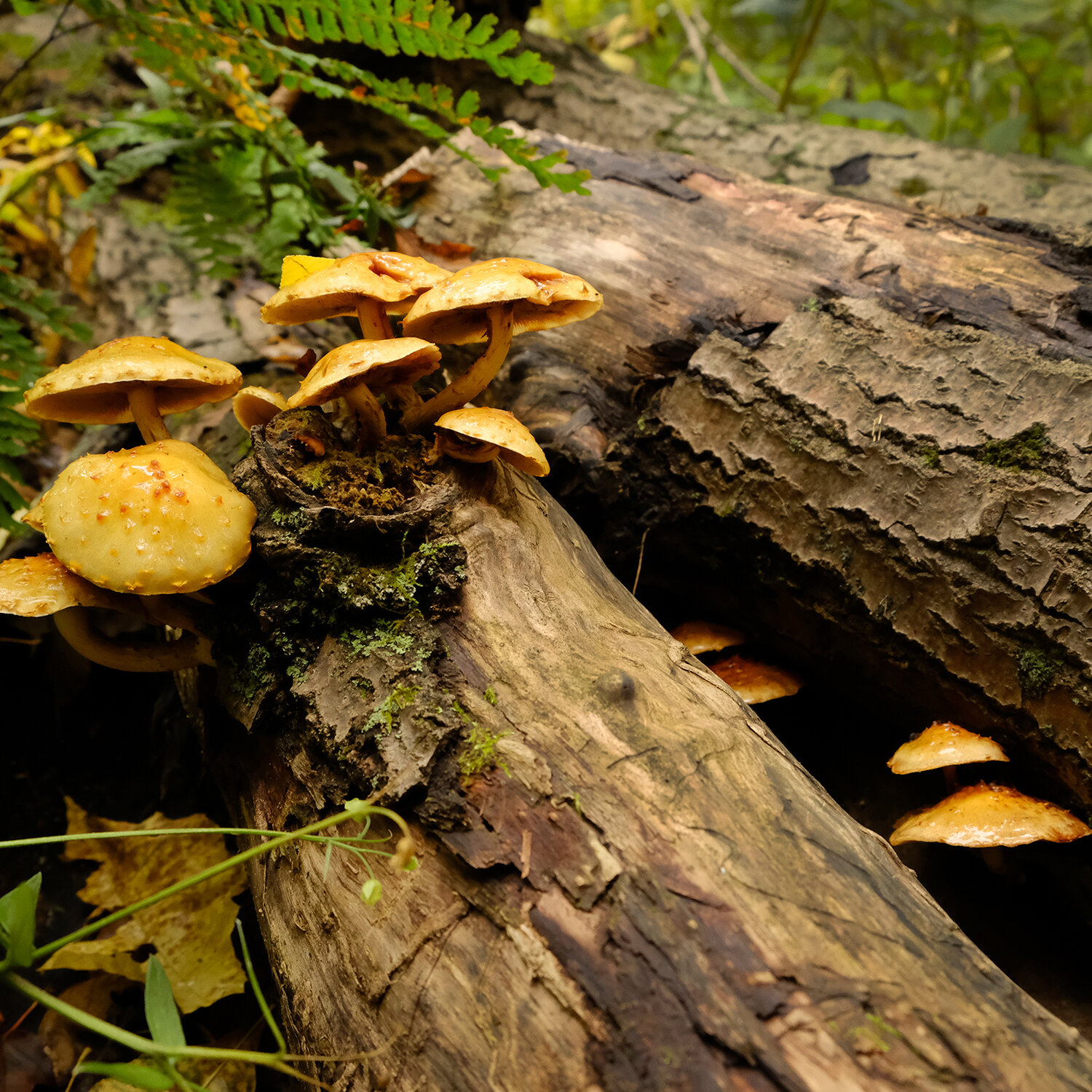
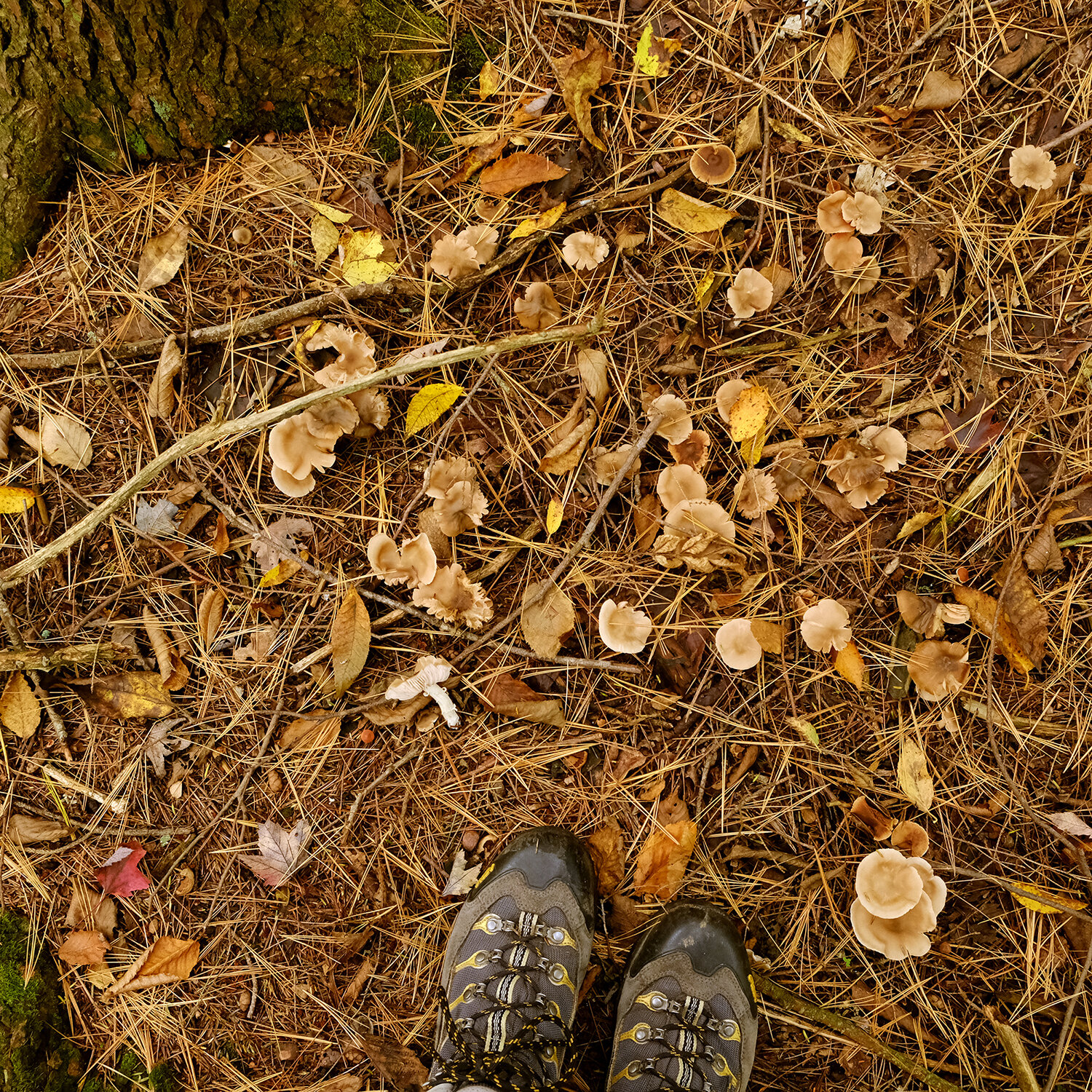
Near sunset, we drove westward among the dark silhouettes of the Driftless Region’s hills toward the Mississippi River. We crossed the river, gleaming below us in the lighting from the bridge, then north on Highway 61 on the Minnesota side, the home stretch.
I ordered coffee beans from Solace Creek Coffee after I returned. As I finish this post, I drink a cup of the delicious brew, black. The aroma and taste remind me of a chilly fall day, sitting on a wood bench in the Tabernacle at Witwen Park & Campground, sipping coffee, warming my hands on the paper cup. Enjoying the luxury of listening to live music. I store these sensations to keep me going during the long Covid-19 winter ahead.
MORE:
Click this link for the Wormfarm Institute’s website and Farm /Art Dtour.
Drone view of Sauk County ARK shows the contours of the earthwork in the field of Kernza®.
In 2018, I wrote a blog post about my first experience of Fermentation Fest and Farm /Art Dtour. Click on the link below for Travel Log #2.

